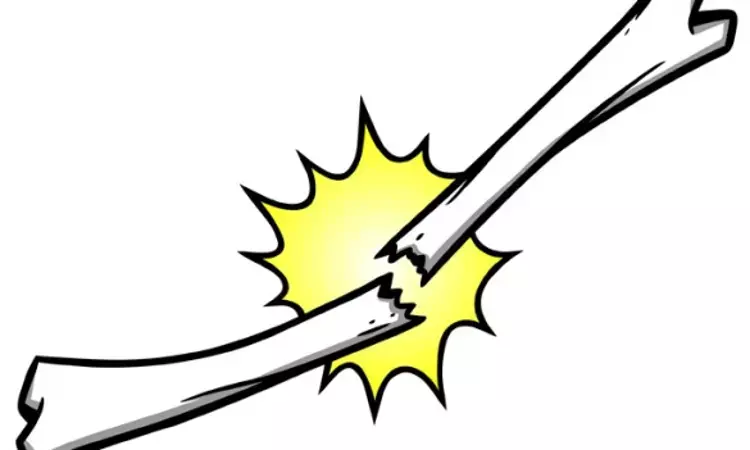- Home
- Medical news & Guidelines
- Anesthesiology
- Cardiology and CTVS
- Critical Care
- Dentistry
- Dermatology
- Diabetes and Endocrinology
- ENT
- Gastroenterology
- Medicine
- Nephrology
- Neurology
- Obstretics-Gynaecology
- Oncology
- Ophthalmology
- Orthopaedics
- Pediatrics-Neonatology
- Psychiatry
- Pulmonology
- Radiology
- Surgery
- Urology
- Laboratory Medicine
- Diet
- Nursing
- Paramedical
- Physiotherapy
- Health news
- Fact Check
- Bone Health Fact Check
- Brain Health Fact Check
- Cancer Related Fact Check
- Child Care Fact Check
- Dental and oral health fact check
- Diabetes and metabolic health fact check
- Diet and Nutrition Fact Check
- Eye and ENT Care Fact Check
- Fitness fact check
- Gut health fact check
- Heart health fact check
- Kidney health fact check
- Medical education fact check
- Men's health fact check
- Respiratory fact check
- Skin and hair care fact check
- Vaccine and Immunization fact check
- Women's health fact check
- AYUSH
- State News
- Andaman and Nicobar Islands
- Andhra Pradesh
- Arunachal Pradesh
- Assam
- Bihar
- Chandigarh
- Chattisgarh
- Dadra and Nagar Haveli
- Daman and Diu
- Delhi
- Goa
- Gujarat
- Haryana
- Himachal Pradesh
- Jammu & Kashmir
- Jharkhand
- Karnataka
- Kerala
- Ladakh
- Lakshadweep
- Madhya Pradesh
- Maharashtra
- Manipur
- Meghalaya
- Mizoram
- Nagaland
- Odisha
- Puducherry
- Punjab
- Rajasthan
- Sikkim
- Tamil Nadu
- Telangana
- Tripura
- Uttar Pradesh
- Uttrakhand
- West Bengal
- Medical Education
- Industry
Intracompartmental pressure tied to skeletal muscle recovery after tibial diaphyseal fractures

Researchers from a recent study have found out that short-term ICP elevation was associated with long-term skeletal muscle recovery following tibial diaphyseal fracture, as published in the Journal of Orthopedics and Traumatology.
Due to the special anatomy of the lower leg, tibial diaphyseal fracture causes increased intracompartmental pressure (ICP). Not only is this increased ICP the manifestation of skeletal muscle injury, but it induces further deterioration of the injury.
Therefore, Shengjie Tian and colleagues from the Department of Orthopaedics, Yangpu Hospital, Tongji University School of Medicine, People's Republic of China and from the Department of Emergency Traumatic Surgery, Shanghai University of Medicine & Health Sciences Affiliated Zhoupu Hospital, Shanghai, China carried out the present study with the aim to assess the association between short-term ICP elevation and long-term skeletal muscle recovery after severe limb trauma.
In this single-center ambispective cohort study, the authors retrospectively screened and recruited a cohort of tibial diaphyseal fracture patients with integrated ICP data during the early post-traumatic period, and performed a prospective observational study to evaluate their skeletal muscle recovery through long-term follow-up and MR imaging after the removal of the implants.
The association between ICP elevation and skeletal muscle recovery was analyzed using statistical methods and the following key points were laid out-
- A total of 46 patients with healed fractures underwent intramedullary nail removal and MR imaging.
- The absolute values of the Pearson product-moment correlation coefficients between various ICP parameters and the cross-sectional area ratio (CSAR) ranged from 0.588 to 0.793, and the correlation coefficients between the ICP parameters and the average T2-weighted signal intensity ratio (T2SIR) varied from 0.566 to 0.775.
- Statistically significant associations were observed between the ICP parameters and the MR imaging parameters when simple linear regression analysis was performed.
- Among the ICP parameters, the accumulated ΔP (ΔP = diastolic blood pressure minus ICP) had the highest determination coefficient and explained 62.1% and 59.1% of the variance in CSAR and T2SIR, respectively.
Hence, the authors concluded that "short-term ICP elevation was associated with long-term skeletal muscle recovery, and that the accumulated ΔP, which accounts for both the ICP data and time, was the ICP parameter most closely associated with the recovery of skeletal muscle."
Firm conclusions such as the accumulated ΔP threshold for skeletal muscle recovery could not be drawn from this study due to its size, but the study can provide ideas and thoughts for future research, they further added.
Dr. Nandita Mohan is a practicing pediatric dentist with more than 5 years of clinical work experience. Along with this, she is equally interested in keeping herself up to date about the latest developments in the field of medicine and dentistry which is the driving force for her to be in association with Medical Dialogues. She also has her name attached with many publications; both national and international. She has pursued her BDS from Rajiv Gandhi University of Health Sciences, Bangalore and later went to enter her dream specialty (MDS) in the Department of Pedodontics and Preventive Dentistry from Pt. B.D. Sharma University of Health Sciences. Through all the years of experience, her core interest in learning something new has never stopped. She can be contacted at editorial@medicaldialogues.in. Contact no. 011-43720751
Dr Kamal Kant Kohli-MBBS, DTCD- a chest specialist with more than 30 years of practice and a flair for writing clinical articles, Dr Kamal Kant Kohli joined Medical Dialogues as a Chief Editor of Medical News. Besides writing articles, as an editor, he proofreads and verifies all the medical content published on Medical Dialogues including those coming from journals, studies,medical conferences,guidelines etc. Email: drkohli@medicaldialogues.in. Contact no. 011-43720751


